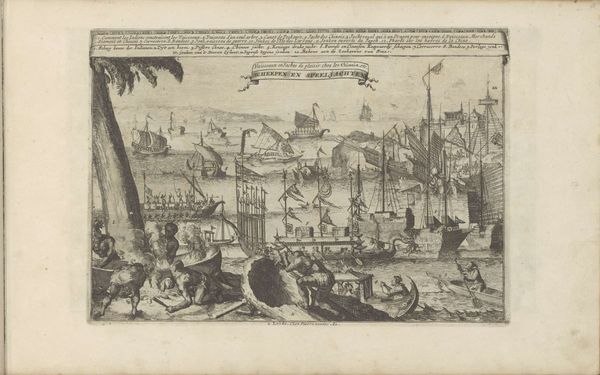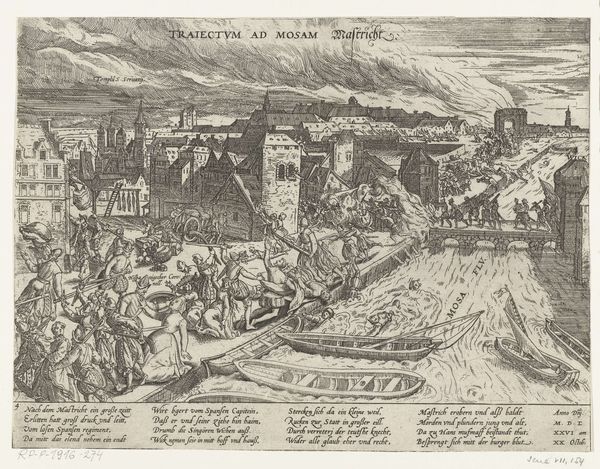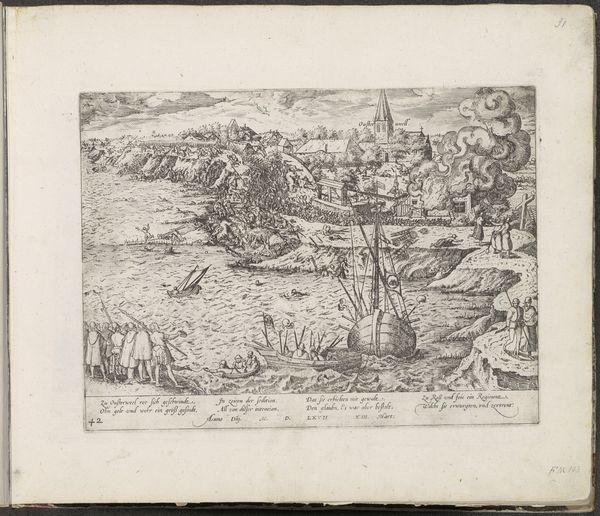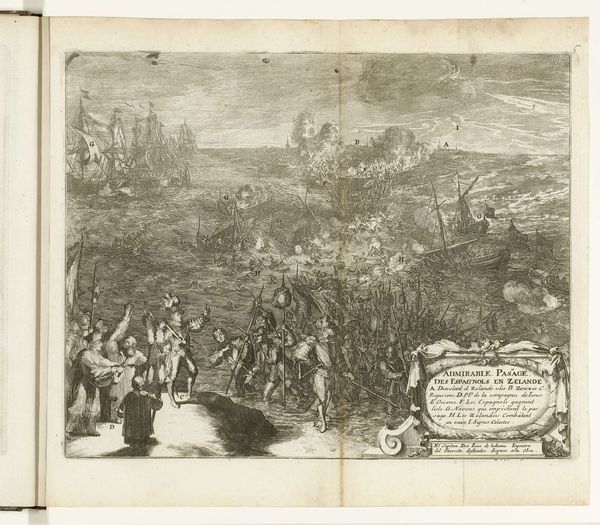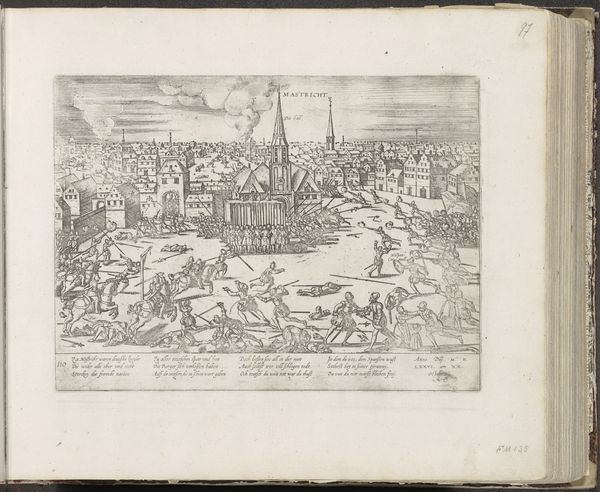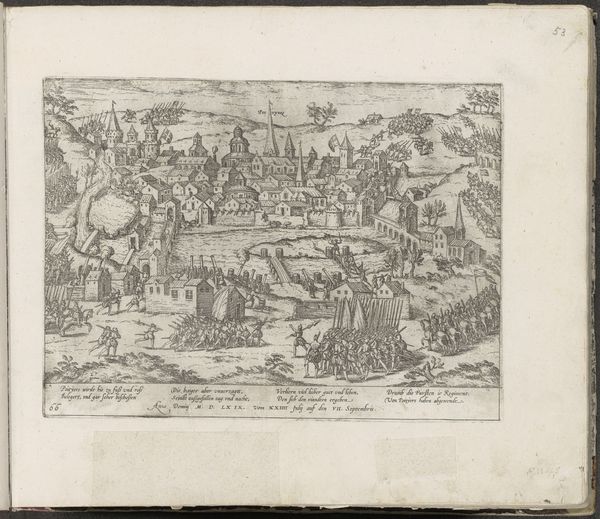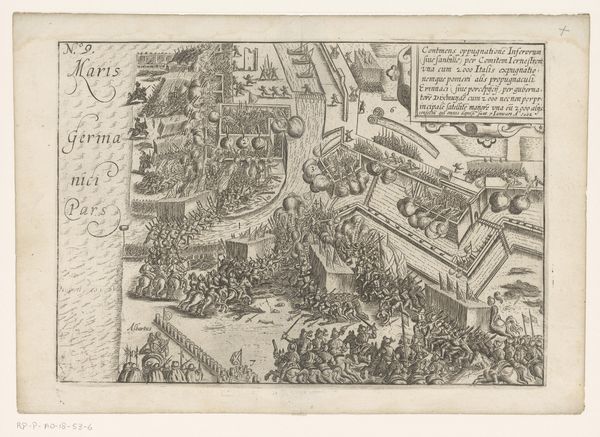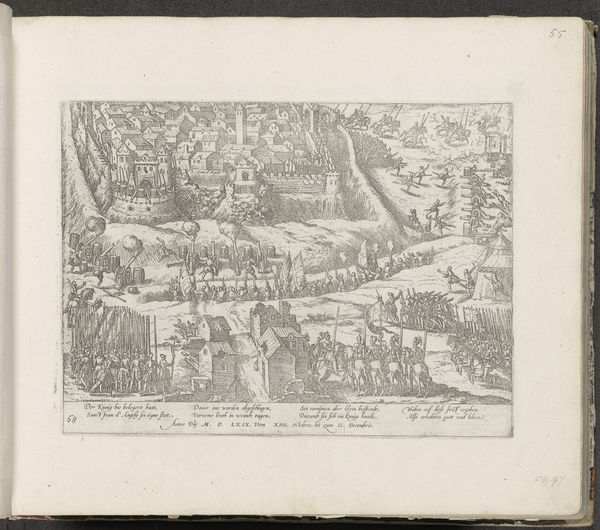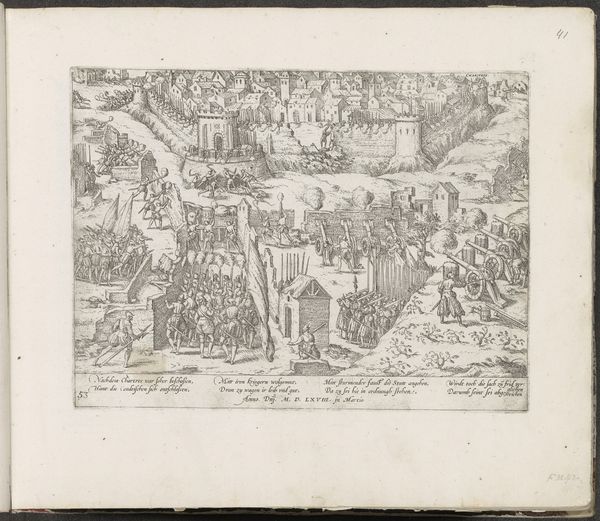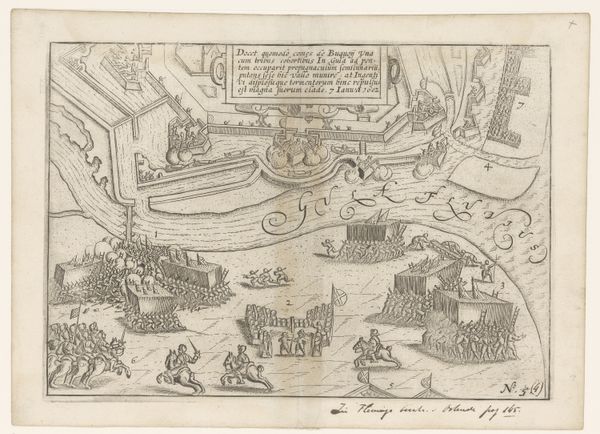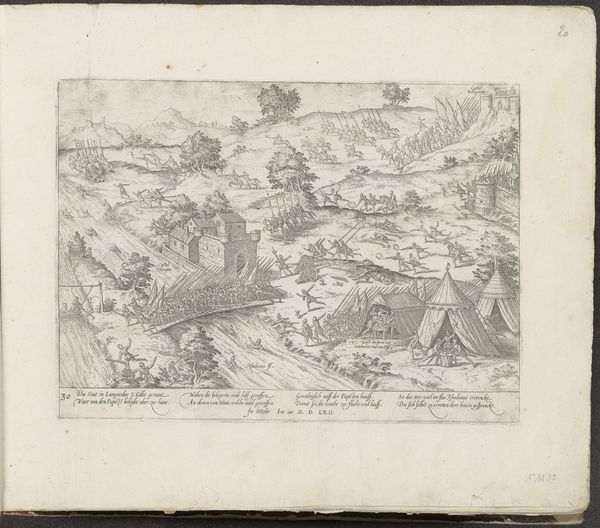
Beleg van Oostende: brand in fort Albertus op 13 november 1601 1601 - 1615
0:00
0:00
anonymous
Rijksmuseum
print, engraving
#
baroque
# print
#
old engraving style
#
landscape
#
history-painting
#
engraving
Dimensions: height 167 mm, width 241 mm
Copyright: Rijks Museum: Open Domain
Curator: Let’s consider this dramatic engraving from the Rijksmuseum’s collection, titled “Beleg van Oostende: brand in fort Albertus op 13 november 1601.” Although created by an anonymous artist sometime between 1601 and 1615, the print depicts the siege of Ostend. What strikes you upon seeing it? Editor: Immediately, the flames engulfing Fort Albertus pull my focus, and the dark, frenetic energy vibrates through the piece. This feels like a symbolic inferno of colonial conflict. Curator: Absolutely, that symbolic dimension is key. Consider the historical context: the siege of Ostend was a pivotal moment in the Eighty Years' War, a struggle for Dutch independence from Spanish rule. Fort Albertus becomes a loaded symbol, signifying not just military might but also the fraught power dynamics of empire and resistance. The chaotic arrangement mirrors that tumultuous history. Editor: And within that chaos, I notice potent symbols. The cleric with the crucifix raised high—what does that convey amidst such violence? And even the plumes of smoke are symbols used for disaster or distress in this historical moment. Curator: The figure with the cross represents, ostensibly, divine approval. He might be a call for moral justification amidst this conflict and colonial ambitions. But if we bring contemporary lenses to the past, who would interpret such approval in our moment? What if, in fact, his gestures signify that war, conquest and colonization were intertwined with religion. Editor: I am now struck by the faces within the picture’s frame. Engravings often lack specific facial features, yet here I see distress and anxiety—mirrored, in some way, across those defending and attacking. Curator: I find it very hard not to think about the modern consequences of these wars—the borders of Europe still defined by religious affiliation, ethnic separation and long histories of conflict. Editor: That's a really critical connection, reminding us that history painting is never just about the past, it also leaves residue for the future. Curator: Looking at this engraving, with the fort ablaze and the figures caught in turmoil, I am struck how a single image encapsulates the violent contradictions and cultural legacies of its era. Editor: Yes, it feels as though every element in this small but fiery scene has echoes across time and within us.
Comments
No comments
Be the first to comment and join the conversation on the ultimate creative platform.
